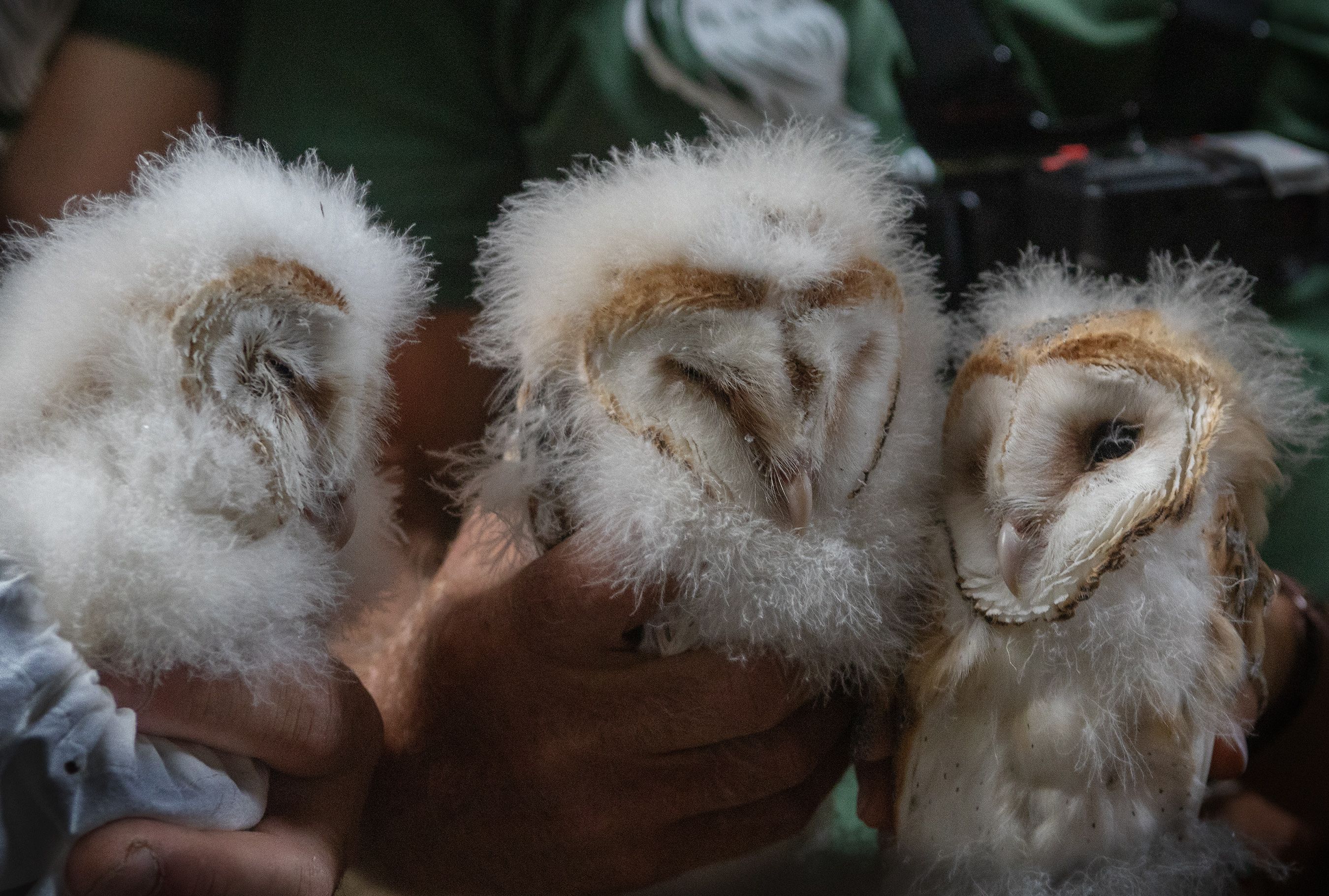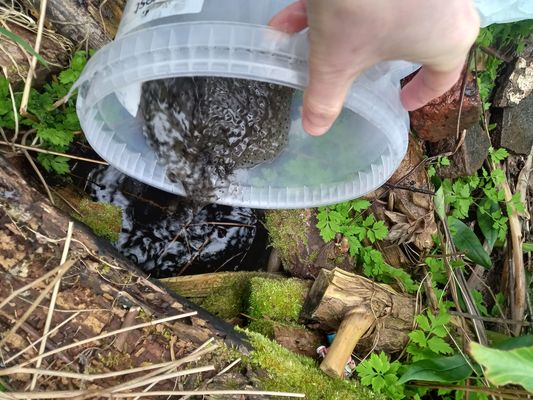WHEN five pairs of barn owls nested this spring around Lough Neagh and its County Antrim hinterland, it was the same number as last year. “We’re always happy if we hit the same number as we got before,” says owl saviour Ciarán Walsh, “although we do always want more.”
But ‘more’ was to come from a surprising avenue – the eggs laid and chicks reared. Last year 11 successfully fledged – that jumped to 19 this year.
“It shows you that it’s not just about breeding pairs. When the food source is plentiful, the adults can raise more young,” he said.
That new food source was also surprising – an invasive species, but one which is certainly welcomed by Ireland’s owls – voles. “Voles are of benefit to the owls – the south have had 800 barn owl nests this year, a huge jump which is down to the voles. We’re seeing more of this introduced species and the owls are feeding them to their young, we can see that on our nest cameras.”
But Ciarán warns: “We don’t know what the knock-on effect the voles will have on our native woodmouse.”
When Ciarán started helping barn owls 14 years ago, he was only trying to protect a single nest he had come across in an old house on the shores of Lough Neagh. One late summer’s day he brought Dúlra to see it. We lay in a ditch for hours quite a distance from the abandoned cottage – dressed from head to toe in camouflage – waiting for dusk with our bins aimed at the house.
Finally the ghost-like apparition appeared from a window frame – an adult leaving the nest to hunt along the Lough. That stunning image will remain seared into Dúlra’s memory forever.
These were probably the last two barn owls – scréachóg reilige in Irish – in this whole vast rural area of County Antrim, and so Ciarán set to work to fix it.
TEAMWORK: Barn owl numbers are rallying thanks to the work of a small army of enthusiasts
Today, he and the three volunteer pals who were to join him have put up 120 nestboxes – and counting. “I put boxes out on a radius of that original nest - 2km, 4km, 6km, 10km now 12km. Twelve of them were used this year – six as nests and the others by solitary birds. One of the nests was later abandoned.
“The young owls prefer not to fly across the lough, they’ll travel across the land where their food is and that’s where we put our boxes, right on the outskirts of Belfast.
“It’s slow but it’s working.
“All the landowners and farmers we have approached have been brilliant. In 12 years only one farmer was against it, and he wasn’t against the barn project but he didn’t want strangers on his land because he had a lot of expensive farm equipment.”
The Lough Neagh algae hasn’t impacted the owls – yet.
“Two of our nests are on the Lough shore and the chicks are healthy in them. The parents hunt along the shore for rats and we don’t know if that will bring them into contact with the blue-green algae,” said Ciarán.
“It’s certainly having an impact on all the wildlife here, last year we had a lot of dead swans.”
Of this year’s brood, 15 have been ringed. “One nest with four chicks is just too risky – it’s in a chimney and we don’t want to go in case something falls on to the nest, all you would need would be for one brick to fall and it would be a disaster.”
As summer draws to a close, Ciarán will keep a watchful eye on the 19 chicks to make sure they make it to adulthood.
“I’m always happy when I see the last one on the camera leave. There’s a couple of them still quite young, three of them haven’t left their box yet to practise flying, so it will be late September until they are gone.
“Sadly, most won’t make it past their first year, although those that do will live to an average of five years. That first pair that we watched in the nest I think might have been around 10 to 15 years old, so they can survive for quite a long time.”
Ciarán says that – surprisingly for birds – most are killed by cars. “If they land on the road with prey, they just stare into the headlights of an approaching car and get run over.
“And then there’s poison, we’re trying to encourage farmers not to reach for the poison as soon as they see a rat.”
But it’s not like Ciarán puts his feet up once the last chick flies off into the County Antrim night. “Once winter hits we go round every box to clear them out, carry out repairs, build new boxes and then put them up around the start of the year when the owls are looking for their own territories. It never stops!”
Dúlra asked Ciarán how many owls he’s helped rear since finding that first nest in 2010. He was stumped – it was a question that he had never been asked before.
“When I think about it, it must be 60 or 70 chicks,” he finally said.
That’s a legacy to be proud of.
• If you’ve seen or photographed anything interesting, or have any nature questions, you can text Dúlra on 07801 414804.









